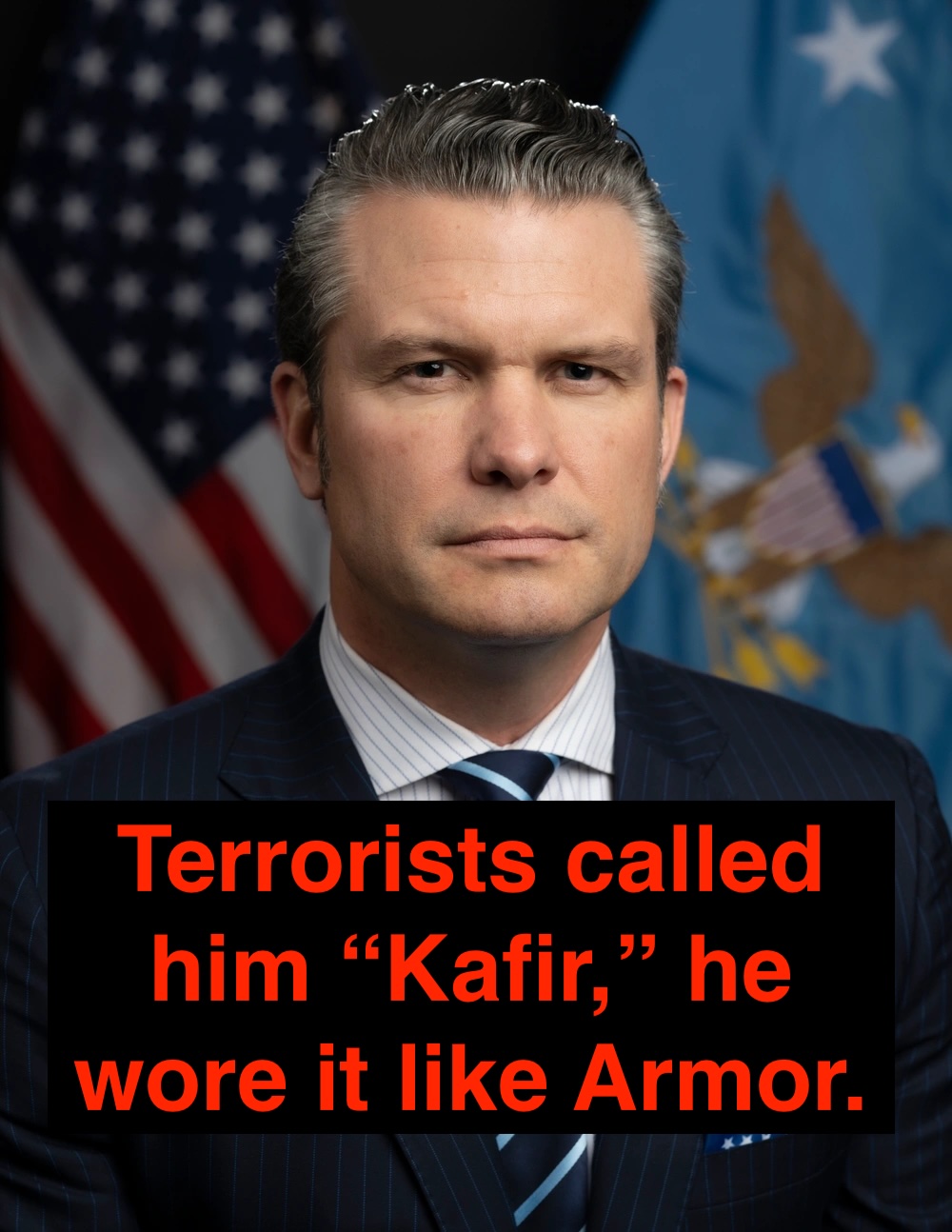Pete Hegseth’s tattoo of the Arabic word kafir—which means “non-believer”—has stirred up controversy online. But if you take a minute to actually understand what it means, where he’s coming from, and the culture of those who fight our wars, it’s clear this is more than a headline. It’s a window into what makes Hegseth exactly the kind of leader this country needs—especially as Secretary of Defense.
What Does “Kafir” Actually Mean?
In Islamic theology, a “kafir” refers to someone who denies the existence of God. It’s commonly translated as “disbeliever” or “infidel.” While the term holds deep religious meaning, extremist groups have distorted it—using it to label anyone they see as an enemy of their ideology. That includes Christians, Jews, supporters of Western values, and even Muslims who don’t align with their views.
Here’s what’s important: Pete Hegseth isn’t a kafir in the theological sense. He’s a practicing Christian. Islam recognizes Christians as “People of the Book,” meaning they’re part of the Abrahamic tradition alongside Jews and Muslims. All three religions trace their roots back to Abraham and share core beliefs, like the worship of one God. Many scholars argue that despite differences in doctrine, Muslims, Christians, and Jews ultimately believe in the same God.
So no—Pete Hegseth wouldn’t be considered a kafir under Islamic teachings. But Hegseth’s tattoo isn’t about claiming that identity. It’s about taking a dehuminizing label, used by extremist groups that U.S. soldiers have fought against, and turning it into a mark of defiance.
In that context, the tattoo isn’t about hate—it’s a rejection of extremism. It’s a stand against terrorist ideology, not against Islam or its peaceful followers.
Hegseth Isn’t Just Talking—He’s Done the Job
Let’s be real: Hegseth has walked the walk. He graduated from Princeton. Got a master’s from Harvard. Then he joined the Army National Guard and served in Guantanamo Bay, Iraq, and Afghanistan. He earned two Bronze Stars and a Combat Infantryman Badge. That’s not the résumé of a career politician or paper-pusher. That’s the background of a soldier-scholar who’s proven himself in both thought and action.
And he wasn’t some officer hiding in the back. According to those who served with him, Hegseth led from the front. Sgt. Maj. Eric Geressy, who fought with him in Iraq, said Hegseth was often the first one through the door. That says everything.
Military Culture Is Different—And It Needs to Be
Civilians might not get it, but in combat, symbols matter. Psychological Operations (PSYOP) are a critical part of military strategy. They’re meant to mess with the enemy’s head—through symbols, language, and messaging. Tattoos, slogans, call signs—they all play a role in building morale, unity, and mental toughness.
The kafir tattoo isn’t about hating a religion. It’s a reminder of the enemy Hegseth fought and the mindset needed to win. Outside the military, some people just don’t understand it—and that’s fine. But don’t misjudge the meaning without understanding the mission.
Why Hegseth Should Be Secretary of Defense
Here’s the bigger point: Pete Hegseth is exactly the kind of leader we should want running the Department of Defense. He didn’t get where he is by playing the political game to earn stars and titles. He didn’t climb the ladder by keeping his head down and toeing the line. He was a line officer, not a careerist. He focused on the mission, on his soldiers, and on winning wars—not winning favor in D.C.
That makes him dangerous to the establishment—and exactly what the Pentagon needs. The military already has enough generals who know how to work the system. We need someone who knows how to lead, fight, and think clearly about real-world threats.
Let’s Talk With Respect—Not Outrage
Sure, public figures will always face criticism. But let’s not lose the bigger picture. Pete Hegseth has put his life on the line for this country. He’s earned the right to be taken seriously—not judged by a tattoo, but by his record, his values, and his courage.
Before rushing to outrage, take a closer look. Hegseth’s tattoo isn’t about division. It’s about who he is: a man who stood up, stepped forward, and fought for what he believed in—when it actually mattered.

Leave a Reply